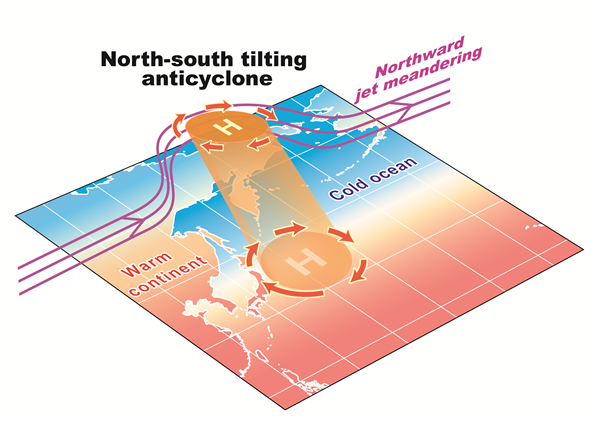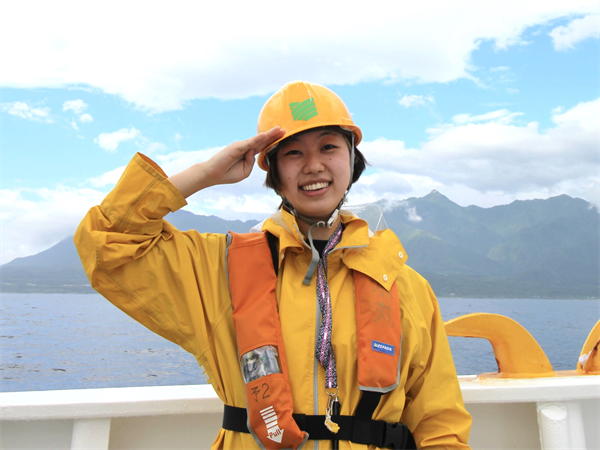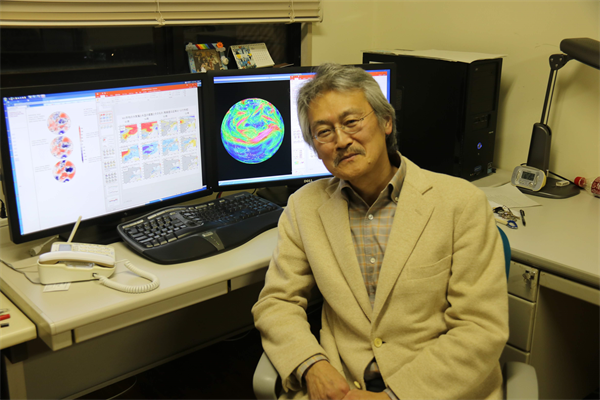Summary of our research
【Significance】
Extremely cold summers are among the most destructive natural disasters, both socio-economically and agriculturally. Historically, food shortages due to cold summers have triggered wars. This paper proposes that a hemispheric-scale climate regime shift occurred in or around 2010. This regime shift has included warmings in the North Pacific and East Eurasian land surface temperatures. The regime shift is accompanied by the positive shift of the Arctic Oscillation (AO), a jet meander, and an upper tropospheric anticyclone, making East Eurasia extremely hot. Our results imply that extremely cold summers are unlikely to occur in East Eurasia so long as this regime persists. Moving forward, it is important that the link between this regime shift and global warming be explored.
【Summary】
Does a warming world, where extremely hot summers are becoming more common, mean that cold summers will never again occur? It is crucial to know whether extremely cold summers are still possible, as such knowledge will significantly impact decisions regarding the further adaptation of crops to cold summers. Japan, which has suffered from many extremely cold summers, has managed past agricultural disruptions with emergency rice imports. In this paper, we show that a climate regime shift associated with the positive phase shift of the Arctic Oscillation occurred in 2010 in northeast Eurasia, making the occurrence of extremely cold summers highly unlikely as long as this new regime persists. In fact, Japan has not experienced a cold summer since 2010, while extremely hot summers have been frequent. Since 2010, a double jet structure with subtropical and polar jets has strengthened, and the polar jet has meandered further north of Japan, resulting in an upper tropospheric anticyclone. This anticyclone, which extends downwards and tilts southwards, reaches southern Japan and prevents cold advection of oceanic air over the cold Oyashio Current. The Okhotsk High, known as the leading cause of cold summers, has occurred frequently in recent years; however, cold summers have not occurred due to the tilting anticyclone. The recent warming of the Oyashio Current weakens cold advection. The Pacific-Japan pattern, known as a remote tropical influence, has been weakened. A better understanding of the regime shift will help us understand the tilting anticyclone and the associated extreme summers in northeast Eurasia.

Fig. Schematic diagram showing why a disastrous cold summer has not occurred in northeast Eurasia since 2010. The recent northward polar jet meandering to the north of Japan in the upper troposphere associated with the upper anticyclone extends downward and touches the surface of Japan with southward tilting. An east-west temperature contrast exists between the hot continent and the less hot ocean. Along with downdraft associated with the anticyclone, horizontal warm air advection associated with warm SST contributes to the recent warmth.
【Original Article】
Title: Consideration of whether a climatic regime shift has prevented the occurrence of a cold summer in northeast Eurasia since 2010
Autours: Miku Amano, Yoshihiro Tachibana, and Yuta Ando
Journal: Journal of Climate
DOI: 10.1175/JCLI-D-23-0191.1
Publication date: Thursday, August 31, 2023 (JST) Online publication
Funding:
This study was supported by the Ministry of Education, Culture, Sports, Science and Technology (MEXT) through Grant-in-Aid for Challenging Exploratory Research (Grant 16K13880), through Grant-in-Aid for Scientific Research (Grants 17H01156, 17H02958, 17K01223, 19H05695, 19H05668, 19H05698, 19H05703, 20H04306, 20K12197), the Arctic Challenge for Sustainability (ArCS; JPMXD1300000000) Project, and the Arctic Challenge for Sustainability II (ArCS II; JPMXD1420318865) Project.
Researcher information

AMANO Miku
Graduate student, Graduate School of Bioresources, Mie University
Specialized area:
Weather, Climate Dynamics

TACHIBANA Yoshihiro
Professor, Graduate School of Bioresources, Mie University
Specialized area:
Weather, Climate Dynamics
Current research field:
Atmosphere-ocean-ice interaction, Climate change, atmospheric teleconnection, extreme weather
ANDO Yuta
Post-doctoral Fellow, Department of Earth and Planetary Sciences, Faculty of Sciences, Kyushu University
Specialized area:
Meteorology, Climate Dynamics
Current research field:
Atmosphere-ocean-ice interaction, Atmospheric teleconnection